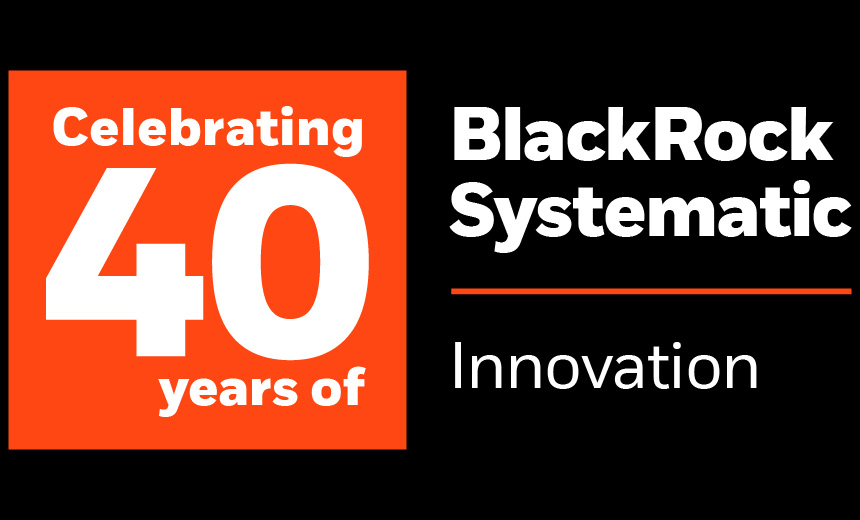Key points
- The shift to a world of structurally higher inflation, elevated interest rates, and persistent policy uncertainty is reshaping investor expectations around both diversification and return potential.
- Market neutral strategies seek uncorrelated returns by taking advantage of volatility and dispersion, rather than relying on market direction to drive returns.
- BlackRock’s Global Equity Market Neutral Fund (BDMIX) has demonstrated the potential for market neutral strategies to generate consistent, diversifying returns in today’s market environment.
Investors today are navigating a regime defined by persistent uncertainty and volatility, driven by forces such as elevated inflation, higher interest rates, and shifting policy conditions. These dynamics are reshaping the investment landscape and challenging long-standing assumptions about portfolio construction.
The charts below show that traditional stocks and bonds, the core building blocks of many investor portfolios, have experienced increased volatility in this environment. At the same time, the role of bonds as a portfolio diversifier has been challenged, as shown by rising return correlations between the two asset classes.
Against this backdrop, investors may need to rethink portfolio construction by incorporating new sources of diversification and return. While there is no one-size-fits-all solution, market neutral strategies such as BlackRock’s Global Equity Market Neutral Fund (BDMIX) can play a meaningful role by seeking to deliver consistent returns with low correlation to both stocks and bonds.
The following sections examine what market neutral investing is, how it works in practice, and why it may be increasingly relevant for portfolios today.
What are market neutral strategies?
Market neutral strategies are designed to generate returns that are independent of overall market direction. This contrasts with long-only strategies, which seek to invest in stocks with the most favorable outlooks (while avoiding others), tying returns to directional market forces such as economic growth and investor sentiment.
Market neutral strategies take a different approach by combining long and short positions to express a wider range of active views while seeking to limit market-driven risk. These views, whether positive, negative, or neutral, can be implemented across a broad investment universe, expanding the opportunity to generate alpha1 through stock selection.
Maintaining a relatively balanced mix of long and short portions often results in near-zero net market exposure, significantly reducing sensitivity to market direction. Performance is instead driven by the ability to accurately forecast relative performance differences between long and short positions.
In practice, when the securities on the short side of the portfolio underperform those on the long side as expected, the strategy can generate positive returns regardless of whether markets are rising or falling. The return potential comes from the spread between the long and short positions. The chart below illustrates this in an upward-trending market: if Holding A is expected to gain 12% and Holding B is expected to gain 2%, going long A and short B targets a 10% relative return before transaction costs.
When are market neutral strategies expected to perform best?
While market volatility can be a headwind for beta-oriented strategies,2 it can serve as a tailwind for alpha in market neutral approaches. Beneath the surface, uncertain and volatile environments are often marked by greater dispersion in company fundamentals and stock returns. This dispersion creates a richer landscape for alpha within a long-short construct.
In the pre-COVID era, a backdrop of secular disinflation and low borrowing costs created broadly supportive conditions for companies, fostering a “rising tide lifts all boats” environment that largely suppressed return dispersion. Today, the market landscape is more uneven, with companies differing significantly in their ability to navigate a range of challenges including higher input costs and elevated borrowing rates.
The chart below illustrates how BDMIX has navigated the evolving market environment since 2022, as the defining features of the new regime became more entrenched in the post-COVID period. The strategy has capitalized on volatility rather than being hindered by it, with its systematic process and daily forecasting enabling a nimble approach to capturing opportunities. The result has been consistent alpha that is distinct from market direction and relatively resilient across shifting narratives and conditions.
Market neutral strategies like BDMIX have also benefited from the higher interest rate environment. BDMIX expresses active stock selection through highly liquid, capital-efficient equity derivatives. These synthetic exposures are backed by physical assets, with the fund’s collateral invested in short-term money market instruments such as Treasury bills. As a result, the fund’s return profile can be viewed as alpha layered on top of the yield from short-term cash, enhancing total return potential.
How can market neutral strategies improve portfolio outcomes?
Leveraging analysis from BlackRock’s Investment and Portfolio Solutions team, this section explores how market neutral strategies like BDMIX can impact portfolio outcomes.
The chart below shows BDMIX’s performance profile relative to both stocks (IVV) and bonds (AGG). Beta measures a strategy’s sensitivity to broad market movements, with a beta of 1 indicating full exposure. BDMIX maintains near-zero beta to both asset classes, underscoring its role as a true diversifier regardless of funding source. Alpha is calculated as the portion of returns above what can be explained by the cash yield and any exposure to stock or bond markets. With market sensitivity so low, the returns generated are effectively pure alpha, independent of those markets rather than just a spread over them. This demonstrates that BDMIX has delivered a distinct return profile, with performance driven primarily by security selection and idiosyncratic risk rather than broad market direction.
Source: Morningstar, MPI, and BlackRock through 8/14/2025. Alpha is calculated using the CAPM framework and reflects BDMIX’s return in excess of the risk-free rate (cash yield) and its beta-adjusted exposure to IVV or AGG. Past performance does not indicate future results. Refer to blackrock.com and ishares.com for current month-end and standardized performance for BDMIX, IVV, and AGG.
The next chart examines the impact of reallocating 10% from bonds to BDMIX within a 60/40 portfolio of stocks and bonds. This adjustment slightly reduces the portfolio’s beta (from 1.00 to 0.94), indicating lower sensitivity to market movements. At the same time, alpha increases, reflecting the addition of a new, uncorrelated source of return through BDMIX.
Source: Morningstar, MPI, and BlackRock through 8/14/2025. 60/40 portfolio is represented by 60% IVV (stocks) and 40% AGG (bonds). 60/30/10 portfolio is represented by 60% IVV (stocks), 30% AGG (bonds), and 10% BDMIX. Past performance does not indicate future results. Refer to blackrock.com and ishares.com for current month-end and standardized performance for BDMIX, IVV, and AGG.
The team also assessed the overall performance impact of reallocating 2% from bonds (AGG) in a 60/40 portfolio for 2024 and 2025 so far. Of all the allocations shown, BDMIX delivered the largest positive contribution. It also exhibited lower volatility than certain segments of the fixed income market, including corporate credit. This underscores the value of market neutral strategies—and BDMIX in particular—as a potentially effective and complementary addition to portfolios in today’s regime.
Source: Morningstar, MPI, and BlackRock.. 2024 Performance is from 1/1/2024 – 12/31/2024. 2025 YTD Performance is from 1/1/2025 – 8/14/2025. Descriptions of the indices used are listed in the footnotes at the end of the piece. The performance shown is hypothetical, as the portfolio analysis for the relevant time periods assumes all of the allocations were held. Historical asset allocation changes are not reflected in the hypothetical performance shown. From a portfolio maintenance perspective, these portfolios were assumed to be rebalanced on a quarterly basis. Hypothetical data results are based on criteria applied retroactively with the benefit of hindsight and knowledge of factors that may have positively affected its performance and cannot account for risk factors that may affect actual portfolio performance. The performance quoted represents past performance and does not guarantee future results. Investment return and principal value of an investment will fluctuate so that an investor's shares, when sold or redeemed, may be worth more or less than the original cost. Current performance may be lower or higher than the performance quoted. Index returns are for illustrative purposes only and do not represent actual fund performance. Index performance returns do not reflect any management fees, transaction costs or expenses. Indexes are unmanaged and one cannot invest directly in an index. Past performance does not guarantee future results. For month-end and standardized fund performance, please visit blackrock.com or ishares.com.
Conclusion
In a market defined by volatility and uncertainty, market neutral strategies like BDMIX offer a compelling way to help seek improved portfolio outcomes. By actively capitalizing on volatility and dispersion, these strategies seek to deliver consistent, uncorrelated returns—enhancing diversification and return potential in today’s evolving environment.
To obtain more information on the funds, including the Morningstar time period ratings and standardized average annual total returns as of the most recent calendar quarter and current month-end, please visit:
Global Equity Market Neutral Fund
The Morningstar RatingTM for funds, or "star rating", is calculated for managed products (including mutual funds, variable annuity and variable life subaccounts, exchange-traded funds, closed-end funds, and separate accounts) with at least a three-year history. Exchange-traded funds and open-ended mutual funds are considered a single population for comparative purposes. It is calculated based on a Morningstar Risk-Adjusted Return measure that accounts for variation in a managed product's monthly excess performance, placing more emphasis on downward variations and rewarding consistent performance. The top 10% of products in each product category receive 5 stars, the next 22.5% receive 4 stars, the next 35% receive 3 stars, the next 22.5% receive 2 stars, and the bottom 10% receive 1 star. The Overall Morningstar Rating for a managed product is derived from a weighted average of the performance figures associated with its three-, five-, and 10-year (if applicable) Morningstar Rating metrics. The weights are: 100% three-year rating for 36-59 months of total returns, 60% five-year rating/40% three-year rating for 60-119 months of total returns, and 50% 10-year rating/30% five-year rating/20% three-year rating for 120 or more months of total returns. While the 10-year overall star rating formula seems to give the most weight to the 10-year period, the most recent three-year period actually has the greatest impact because it is included in all three rating periods.
You should consider the investment objectives, risk, charges and expenses of the fund carefully before investing. The prospectus, and if available, the summary prospectus contain this and other information about the fund and are available, along with information on other BlackRock funds, by calling 800-882-0052 or from your financial professional. The prospectus should be read carefully before investing. Investing involves risk including possible loss of principal.
Systematic Investing



